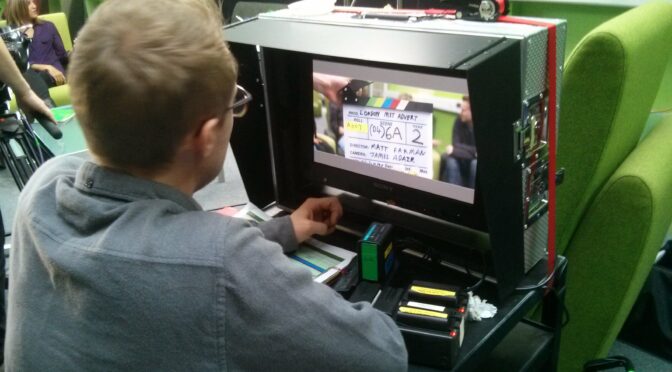When looking to promote your business, there are a wide variety of types of content that you can create that can work for your business or brand. Product explainer videos are an amazing way to give and indepth view of your product, whilst a ‘how-to’ video is a great way to give your customers valuable content. In this article we cover the different types of videos, the benefits they can give your business and how they can be used to promote your brand. If you are looking for a video production company for your next video project then do get in touch.
Brand Films
Lets start by talking about “Brand Films”. Another way to define these would be “Company Story Videos”, “Corporate Videos” or “Homepage Videos”. Generally speaking this is the company story film that communicates who you are and what you do in a nutshell.
Sock Shop Brand Film
Usually these films tend to be 1 – 3 minutes long. Depending on the nature of your business, the style can vary tremendously. If a large brand like Nike creates a brand film, its inevitably going to be highly ambitious, emotive and create a splash. Nike’s story is long and varied so their brand film will be a statement of where they are right now and their vision for the future. If you are a smaller business with a more modest budget, then a brand film can be a really great way to quickly explain your product or service.
Brand Films are probably one of the best projects to embark on before doing anything else. In the same way that most businesses focus on tarting up their shop windows by creating a compelling website, colourful social media channels and glossy print assets, so too does the Brand Film help potential customers understand the business better. Its also a great exercise in condensing your company’s USP into a simple to understand piece of comms. Unlike a website, where you can indulge yourself by including all the great things about your business and endless detail about the services you provide, a brand film forces you to strip out all the unnecessary detail to the point where you have the bare bones of what is most important to your customers.
Brand Films are often either narrated by a voice-over artist or tell a story using interviews with people. When you write a script that needs to be only 2 minutes long, you soon see how little information you can include. For customers, its the quickest, simplest and least confusing way to get a clear snapshot of your business. There is no hard and fast rule about the best way to structure a brand film but the best ones in my view, do more than just impart information. They make the viewer feel something. Think about how you can stir your viewers with your content. This is your opportunity to absolutely nail your story.
Product Explainer Videos
Product explainer videos are used in a very similar way to a brand film but serve to unpack the benefits of a particular product. These types of films are gaining more and more traction as their popularity with customers increases. Product explainers will often sit on a company’s website but can also be used very effectively on e-commerce platforms like Amazon.
Aldi Product Explainer Video
Customer’s are becoming increasingly mistrustful of buying from brands online as fake customer reviews have skyrocketed in recent years. E-commerce is booming but people miss the opportunity to enter a store and see the item in person, to assess the quality and check it fits their expectations. Photos can be incredibly misleading and its hard to judge the look and feel of a product in a 2D world. When you create videos of that item, it suddenly brings it to life for the viewer and helps them to make an informed decision. This not only leads to more purchases but increased customer trust and less returns.
Product explainers, unsurprisingly are highly focused on the product itself so the story that’s being told is about how that product can help the customer. From a style perspective, they can be live action or animation depending on the type of product. A niche product from a SAAS company might be easier to explain using animation where a luxury chocolate would sell itself better using live action.
How-To Videos
This is a catch all for any piece of content that answers a customers problem. These are usually tips and tricks that help people out in their daily lives. Typically they are related to the product or service you offer but are not advertorial in nature. Your brand is included as part of the film but you aren’t shoving it down people’s throats.
Typical how-to videos include recipe videos that many food and drink brands will create that makes use of their product in an interesting way. For example, Baileys often create recipe content that shows on the “Tasty” Facebook channel. How-to videos can be highly practical like hardware store B&Q’s DIY series they run on YouTube that shows you how to do your own home improvements. In the B2B world, how-to videos could be webinars that educate about a particular discipline like sales, leadership or business finance. These kinds of videos do phenomenally well as a marketing tool because you are giving away content for free. You are providing value to people without asking for anything in return so it gets you on their radar and wins their appreciation.
B&Q ‘How-to’ videos
One of the best ways to discover what kind of how-to videos you could create for your brand is to simply look at search volumes on Google or YouTube. What answers are people looking for? There’s a great tool called www.answerthepublic.com which can help with ideas. Even just typing into Google “How do I [input activity]” and then scrolling down through the results until you find Google’s “People Also Asked” box will give you lots of other ideas and suggestions. Once you know what people are asking then you can create content around that question. As YouTube is the second largest search engine after Google, there’s a good chance of getting ranked highly with video content.
Case Study Videos
Case study videos are probably one of the most underused and most effective types of content a brand can create. They enable you to create the right narrative around your brand and help tremendously with customer trust. Its far too easy to set yourself up as a company these days with a simple website and a thin veneer of authenticity. There are so many “so called experts”, dodgy e-commerce sites and fake reviews that today’s customer is highly cynical of brand behaviour and also mistrustful of any promises made to them by businesses. Case studies work in two fantastic ways. There are probably more but I’ll focus on two for now. When you create a case study video featuring one of your customers talking about your business, it validates your product or service and provides the ultimate peer review. Everyone wants to be referred to a product or service by someone they trust and case study videos can do that. If you are a B2B business then put your customers on camera. Get them to talk about the problem you solved, how easy it was to work with you and the outcome you delivered.
You can put those videos on your website to validate your offering and your team can use them as part of their sales and marketing outreach. If you are a B2C business then use case studies via social media and as a means of advertising to new customers.
Secondly, use case studies to go deeper into the story of your company and to highlight aspects of what you do that you customers might not know about. For the food brands we work with, they know that origin and provenance is important to their customers. Where does their food come from? So creating case studies with the farmers in the field or the artisan food producers is a great way to enhance the perceived value of that food item. What have you done as a business that you are proud of? What parts of your offering might be interesting to your customers? Perhaps you have partnered with another organisation to do something noteworthy? Or your team have raised money for charity through a fun run? These sorts of vignettes help to highlight the purpose behind your brand and make customers feel aligned to your goals.
Adverts
I’ve talked a lot about the difficulty of reaching your customers when we’re all being bombarded by so many commercial messages every day. Advertising to your customers is an important part of any marketing strategy and its not a technique that will ever go away. In fact, with continuing advances in technology and processing big data, our ability to reach specific customers wherever they are is getting better and better. We can now be highly targeted to individuals and speak directly to them. This is no more evident than in election campaigns where thousands of advert variations are shown to different people across social media so the political party can create resonance with them. In the last general election, the Conservatives showed thousands of different adverts compared to Labour’s hundreds. But just remember that now that your customers are spending so much of their time online, they are starting to get frustrated with online advertising. The onslaught is increasing every day and for every well intentioned, well positioned advert that offers value to your customer, there’s a dozen bad quality, irrelevant adverts that are interrupting their viewing experience. There’s a reason that 50% of people in the UK admit to using some form of ad blocker.
Mackie’s Facebook Advert
Advertising works but creating resonance with your customers becomes all the more important. We’ve talked about understanding consumer behaviour and the different ways people absorb content. Try to ensure you don’t interrupt people’s online experience with annoying adverts that don’t offer any value to people. The best adverts are ones that are highly relevant for the viewer because they are the right demographic. Many of us don’t mind being advertised to provided its the right type of advert and we find it helpful.
>> Check out our blog on the 7 food and drink brands nailing TikTok right now.
Thought-Leadership Video Content
Video content that establishes your brand or personal brand as a thought leader is a very effective way of creating brand awareness and authority in your space. Sometimes this can be about putting individuals on camera to talk about their expertise in a particular field, sometimes it can be about positioning your business as a thought leader through releasing content that delves into your industry or the service you offer.
CRM software platform Hubspot do an amazing job of releasing huge volumes of content that talks about sales and marketing. For anyone trying to educate themselves about this topic, they are likely to come across Hubspot’s advice and guidance. It then becomes a natural fit to sign up to their platform to implement what they’ve learned. Mindfulness app Headspace do a great job of providing lots of content around mental health which reinforces their position as a brand that understands the daily struggles we all go through. And business coaching brand Dent, produce quantities of video content where their leadership team talk about the typical mistakes people make in business. This helps establish themselves as experts in this field.
Video content can work wonders for your personal brand and establishing the individual as a thought leader. This is not only very important for your own journey but it helps to propel your business forward. Big brands are turning more and more to bringing out the personal brands of the individuals at the business as much as small brands are relying on their leaders to lift their voice above the others.
We care more and more about the purpose and personality of the brands we buy from and faceless corporations are losing out in favour of brands where we feel invested in their journey. Look no further than the disruption going on in the tech sector with the explosion of apps like Airbnb, Uber and Revolut that are taking market share away from the giants. We don’t feel invested enough in the big corporates to give them our loyalty so when a company with a better story comes along to disrupt them, we’re happy to jump ship.
PR Stunts
Stunt based content can be a great way to create lots of buzz around your brand. Burger King did a great job of this recently with their “mouldy burger” campaign that showed how quickly their burger went mouldy after they removed artificial preservatives. For better or worse, it caused a huge media frenzy. Greggs are also masters of this with their recent Vegan sausage roll that they showcased using a video that made it look like an Iphone being unboxed. If the idea of the PR stunt is solid, then creating a film around it can do wonders for your brand.
Burger King Mouldy Whopper
Influencer Content
Making use of influencers is a great way to supercharge the reach of your content. Although the word “Influencer” has sprung up in recent years, the concept is nothing new. Brands have often sponsored celebrities to endorse their products and leverage their audience to increase reach. Now that mini-celebrities are popping up everywhere through the wonders of social media, its easier than ever to find an influencer that matches your company’s profile and who has the ear of the audience you want to reach.
Influencer marketing is a discipline it its own right and can be extremely successful. But consider doing more with your influencer strategy than just asking them to put a photo of your product on their Instagram feed. If you cook up a great idea for some content that features the Influencer or multiple influencers, you will create something that is far more engaging for their followers and a lot more eye catching. Influencers live for the fame and notoriety they are achieving and the income that generates. They want to be in the spotlight more than anything else because that’s how they make a living. If you elevate them by making them the stars in a piece of content, it will not only help their own journey but create more traction for your brand.
Check out our blog ‘Who are the Top 10 Food and Drink Social Media Influencers’
Branded Content
This is a bit of catch all term that applies to any content that a brand puts out. But in this context, I’m using it to refer to content that is created purely for viewer pleasure. This is content that either entertains, educates or informs. Its really the ultimate step in taking a video content first approach to marketing and can pay dividends in the long-term. Brands like Red Bull, Patagonia, and Volvo have all nailed an amazing branded content strategy where their YouTube channels have become a go-to destination for people looking to gorge on high quality, engaging content. The type of branded content you can be putting out ranges from documentaries to reality shows, creative animations to interactive video.
The world is your oyster when it comes to creating branded content and there are no limits to where you can go with it. The purpose of branded content is to position your brand as more than just the product you sell. Red Bull isn’t an energy drink, its about living to the extreme. Patagonia isn’t a sports clothing brand, its a way of life.
Beyond the examples listed above, there are a number of other ways you can use video for your brand that can help to tell your story in the right way. Behind-The-Scenes videos and Vlogging has started to gain a lot of popularity as a way to let people get insider perspective on your business. There’s an influencer marketing agency called Goat who have done this to great effect with daily vlogs documenting the comings and goings of their agency.
On fashion photography shoots, its very common to get some behind the scenes footage to supplement the photography piece. Crowdfunding is another great place to use video content and can be the difference between having a successful investment raise or not.
Creating videos for your business for the express purpose of approaching investors is also a great tool for overcoming their objections and starting conversations. Creating videos for trade shows, conferences, point of sale displays and even the company reception area can deliver great results. Filming key mile-stones and events at your business can help paint a picture of what you are all about. Video can be used to introduce individuals at the company in “Meet the Founder” or “Meet the Team” films. You can send videos messages to people via Email or Direct message where you talk directly to them and give them the personalised treatment. You can use video to recruit talent and on-board new staff members. You can use video as an instruction manual for your product or as a teaching tool for new customers.
The list really is endless. If you want to save time and communicate more effectively then think about how video can do that.
If you are looking for a video production company to support you with your next video project, then do get in touch




